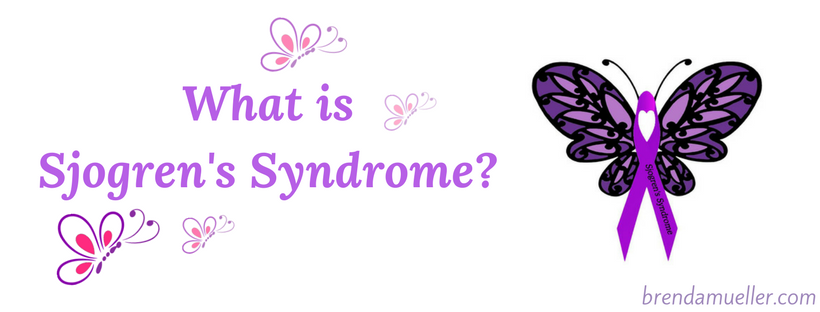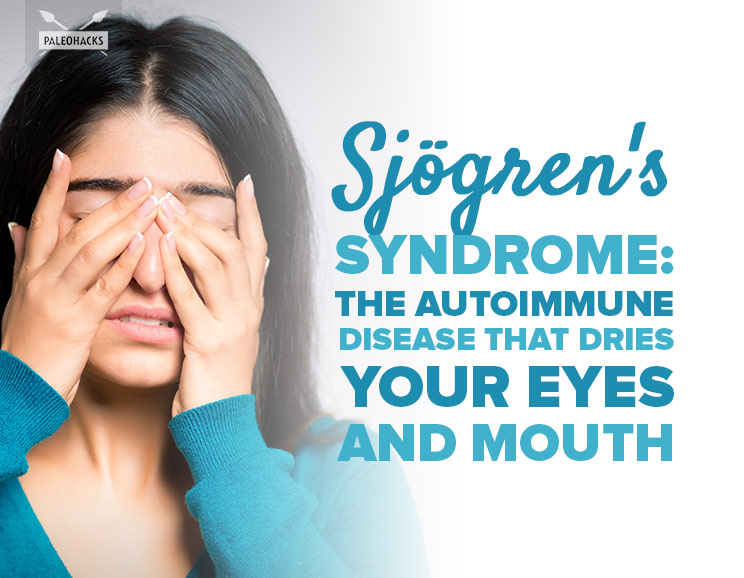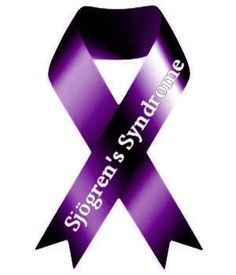
What is Sjogren?
Sjogren’s (SHOW-grins) syndrome is a disorder of your immune system identified by its two most common symptoms- dry eyes and a dry mouth. It is a long-term autoimmune disease that affects the body’s moisture-producing glands. Though the primary symptoms are a dry mouth and dry eyes, there are other symptoms such as dry skin, vaginal dryness, a chronic cough, numbness in the arms and legs, fatigue, and thyroid problems. Described in 1933 by Henrik Sjögren, named after him, there exists a number of descriptions of people with the symptoms. Although people older than 40 are more at risk, anyone at any age can develop the Sjogren’s syndrome.

What are the two types of Sjogren?
There are normally two types of Sjogren’s syndrome, they concern the health problems and connective tissue disorder. Primary Sjogren’s syndrome occurs by itself and secondary Sjogren’s syndrome occurs when another connective tissue disease is present.
How is it diagnosed?
The diagnosis is complicated by the range of symptoms manifested by a patient as there are many similarities between the symptoms of Sjogren and other medical conditions. Patients with Sjogren’s symptoms have different approaches and specialties for treatment which can make diagnosis difficult. As we already know, that dry eyes and dry mouth are common symptoms and it frequently occurs in people over 40 and is ignored as an age-related disease. However, the proper diagnosis is by biopsy of moisture-producing glands and blood tests looking for specific antibodies. Your doctor can also suggest going through eye tests and imaging such as Sialogram and Salivary scintigraphy. Blood tests can show if you have germ-fighting proteins (antibodies) that many people with Sjogren’s have. They also measure the inflammation in your body and other sign that you have the disease. It is revealed that your blood tests can detect high amounts of proteins called immunoglobulins and they are part of your body’s infection-fighting system.

Is there a diet to follow?
There is no special diet for Sjogren’s unless your doctor suggests one. However, alcohol should be avoided as well as spicy or acidic items. You may keep a lozenge to help keep your mouth moist. If you have problems while swallowing food, here are some tips to make it easier:
- use sauces, olive oil, or dressings
- have a drink along with your food
- use a drinking straw to easier swallowing
- eat more cucumbers
- increase your fluid intake
Be sure to choose a balanced diet that is high in fresh fruit and vegetables and low in saturated fats and sugar. Best avoid artificial sweeteners as they are believed to be triggers to an inflammatory reaction. It is also suggested to keep a food diary to help pinpoint any specific food that may cause a reaction or worsen symptoms.

Treatment
Though there’s no current cure for Sjogren’s syndrome there are many things you can do to relieve your symptoms. You can always increase the lubrication and moisturization of the affected tissues:
- Medications to stimulate saliva flow – Pilocarpine and cevimeline are some types of medications that you can use. They have a short-term impact that is limited to a few hours only, so several doses a day are usually required.
- Artificial saliva – Saliva substitutes and mouth-coating gels can relieve dryness of the mouth and they are available in sprays, pre-treated swabs, and liquids. Use it especially at night when the mouth becomes dryer.
- Artificial tears – Helps to lubricate the eyes and is available over-the-counter. Prescription options are available that reduce the need for artificial tears such as cyclosporine ophthalmic emulsion and hydroxypropyl cellulose pellets.
- Moisture chamber spectacles – these are special glasses that keep out irritants and retain moisture.
- Prescription eye drops – these include cyclosporine and lifitegrast
- Prescription expectorants and throat medications – this can be used in cases of respiratory dryness, drugs such as those to stimulate saliva flow, as well as linseed extract, sorbitol, xylitol, or malic acid, can moisturize the area.
- Non-steroidal anti-inflammatory drugs (NSAIDs) – anti-inflammatory drugs such as aspirin, naproxen, and ibuprofen can provide relief for people with Sjogren’s who have regular joint pain.
- Disease-modifying anti-rheumatic drugs (DMARDs) – If the joint pain is accompanied by fatigue and rashes, DMARDs can relieve symptoms. Stronger DMARDs or corticosteroids may be prescribed if the Sjogren’s is affecting the muscles, nerves, lungs, or kidney.
- Anti-fungal medication – Used mostly for oral yeast infections if are constantly occurring, these medications are prescribed to combat the fungus.
- Vaginal lubricants – For vaginal dryness, water-based vaginal lubricants can provide a solution and it can be used during sexual intercourse.
- Punctual occlusion – If you have used up all treatments, then this surgical option can be done. This surgery seals the tear ducts with small plugs to reduce the drainage of tears from the eye and keeps the eye moist for longer. There are temporary silicone plugs that are used until the procedure is confirmed successful.
- Autologous eye serum – In extreme cases of eye dryness, eye drops can be made from the person’s blood serum.
Look out for the next post to know more about Sjogren’s syndrome and its effects on people.



